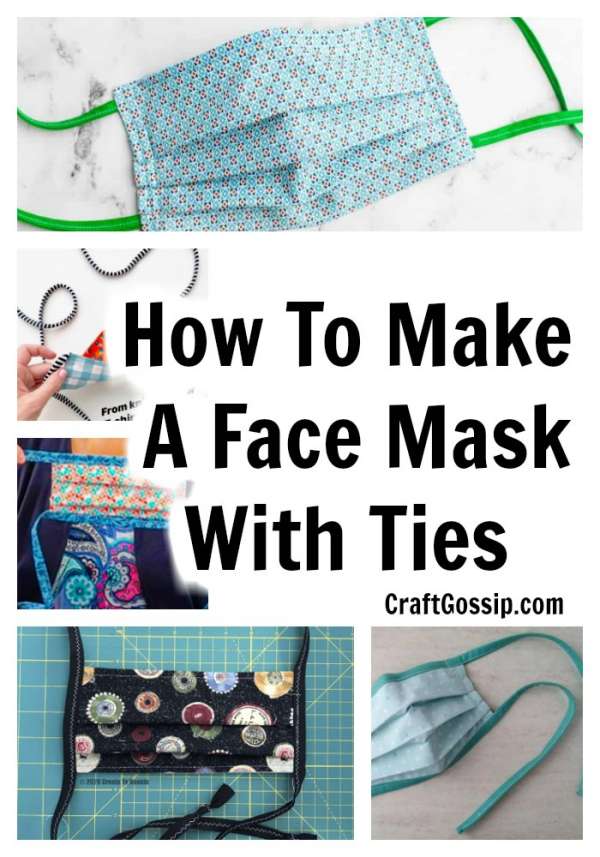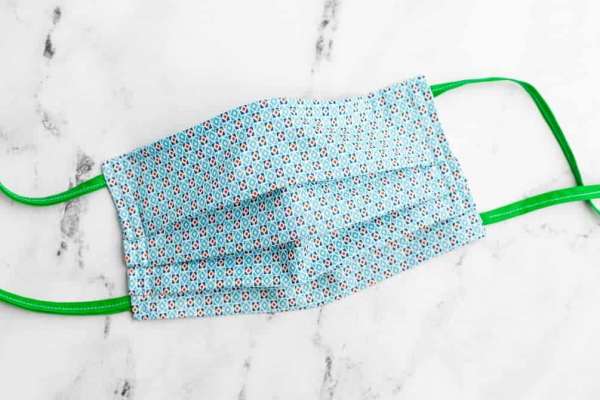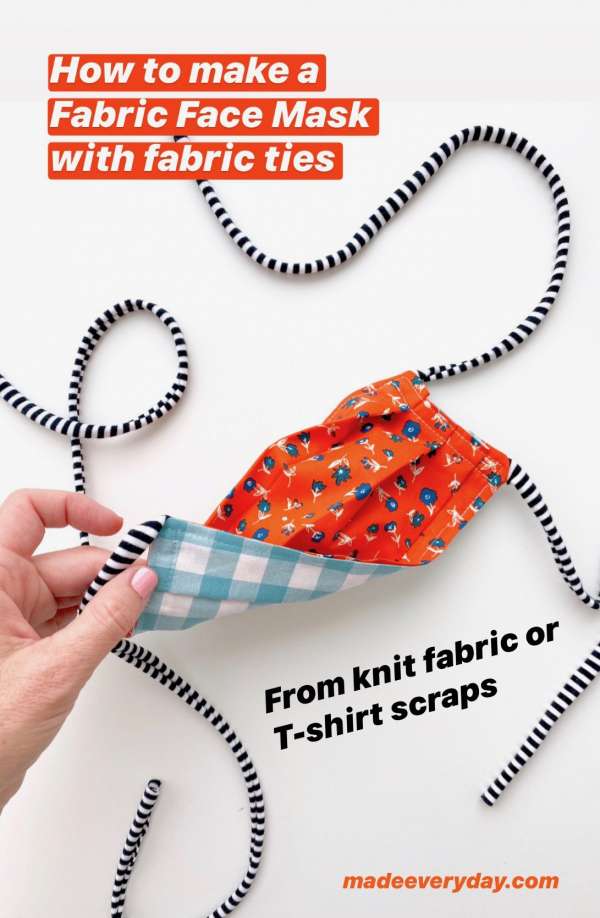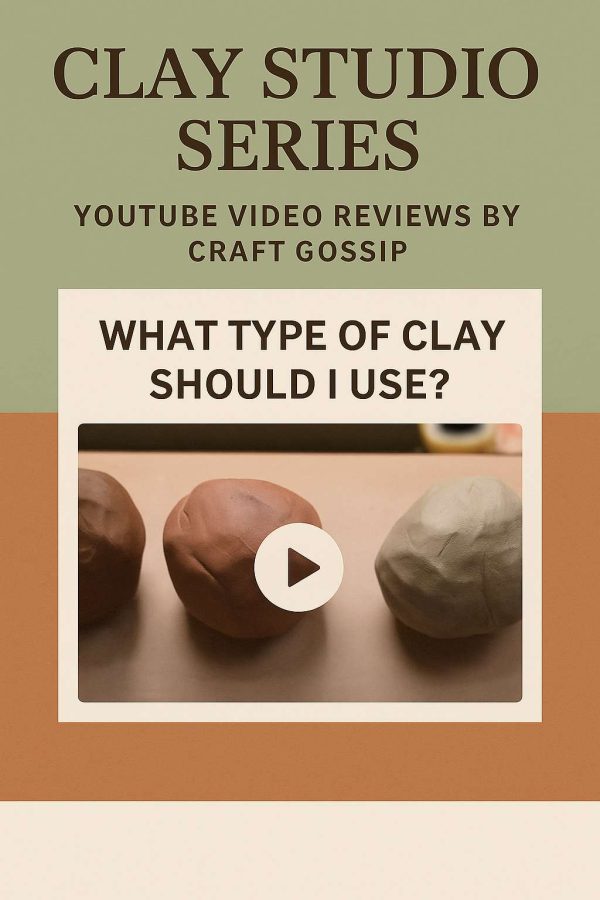
This list of DIY’s is for face masks that use ties. Why ties and not elastic? The elastics are becoming unpopular due to the tension it creates on the ears. Remember most people wearing masks in hospitals and on the frontline are wearing them for hours and hours.
This first face mask is for a pleated mask that has ties for comfort and also a pocket for a mask filter.
This next tutorial is for a basic design with cloth adjustable mask ties, which is perfect for anyone who is a straight stitcher and just learning to sew.

This free tutorial comes with lots of step by step images to guide you along.

This face mask with ties has adjustable ties that are made from knit fabric or an old t-shirt. This allows the mask ties to have a little bit of tension to keep it firmer through the day
This tutorial comes with a video to guide you along, perfect for anyone who is a visual learner and needs some help with making the cloth fabric masks.
Free printable pattern for the mask with ties ca be downloaded here. A great print version with minimal ink requirements.
The main aim of a fabric mask is to prevent YOUR bodily fluids from being expelled or you being splashed on by someone else’s bodily fluids. It is my (non-medical) understanding that air still flows through the masks. The best fabric for surgical face masks is cotton that can be easily washed and NON woven fabric as a filter that can be replaced several times during the day. You can purchase readymade carbon filters too. (for more info about filters read this article here)
Don’t want to make your own but buy a readymade mask? So why should you buy a handmade mask? Because obviously you can’t sew one or you would be making your own, so put a few dollars into someone else’s pocket and keep a handmade business alive.
Looking for a new sew version of the mask? Check this article out No Sew Bandana Mask and different styles of no sew masks using other fabric materials.
Need to make a lot of masks? Check out this amazing Mask Cutting Machine. It cuts 6 masks out at a time!
